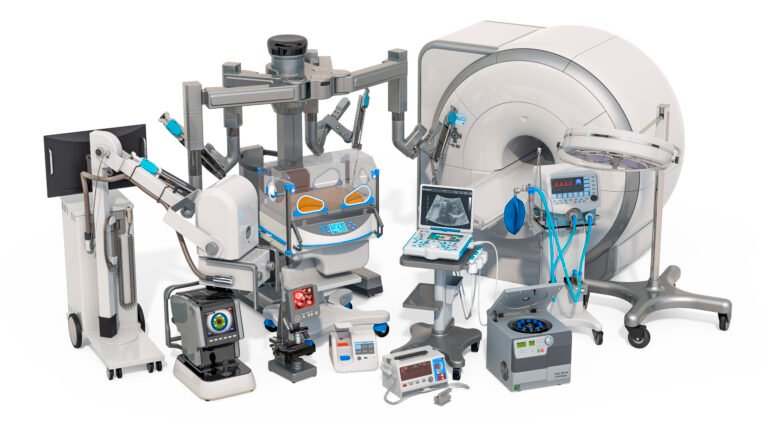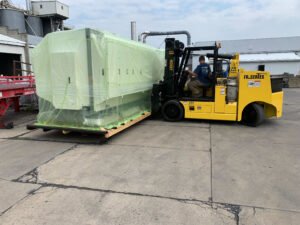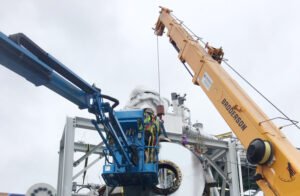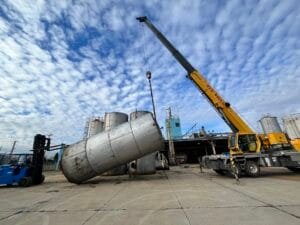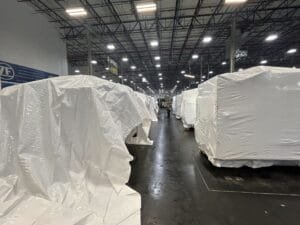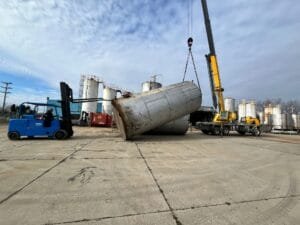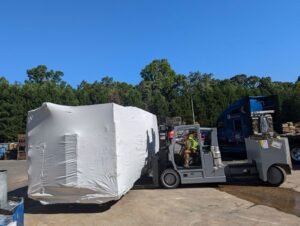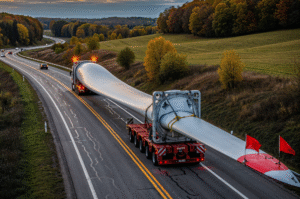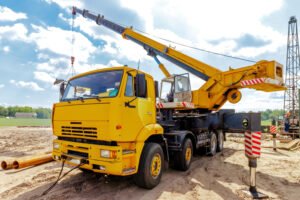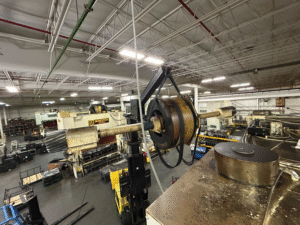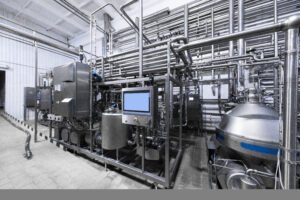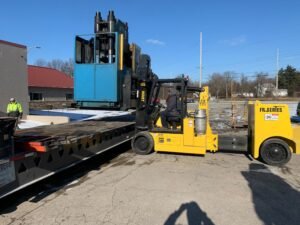Precision, safety, and reliability—these are the hallmarks of moving high-value medical and laboratory equipment. Whether you’re relocating an MRI machine across the hospital or transferring an entire research lab to a new facility, equipment rigging for medical and lab settings is a specialized service that combines advanced engineering with meticulous execution.
In this comprehensive guide, we explore the critical aspects of rigging services for healthcare and scientific environments, why specialized handling is essential, and how to ensure a safe, efficient, and regulation-compliant move.
Understanding Equipment Rigging in Medical and Lab Environments
Equipment rigging refers to the planning and physical process of lifting, moving, and installing heavy, delicate, and often high-value machinery. In the medical and scientific industries, this includes devices like MRI and CT scanners, centrifuges, autoclaves, mass spectrometers, x-ray units, diagnostic analyzers, and cleanroom apparatuses.
Unlike industrial equipment, which is often rugged and enclosed in steel casings, medical and lab equipment is built with sensitive internal components. These machines require not only structural support during movement but also environmental protection, electromagnetic shielding (in the case of imaging devices), and precise calibration during reinstallation. Any mistake in moving such equipment could lead to malfunction, invalidated warranties, regulatory violations, or irreversible damage.
The Unique Challenges of Rigging Medical and Lab Equipment
The rigging process for medical and lab equipment presents a unique set of challenges that go far beyond typical heavy machinery relocation.
One of the most significant difficulties lies in the sheer sensitivity of the equipment. For instance, an MRI scanner contains powerful magnets that must be demagnetized or stabilized before transport. Vibration or tilting can damage critical internal elements. Similarly, gas chromatography equipment and fume hoods may contain volatile compounds, fragile glass parts, or require careful decontamination prior to moving.
Another major concern is spatial limitation. Healthcare and lab facilities are often designed for workflow efficiency, not equipment access. Corridors may be narrow, ceilings low, and elevators not built for heavy-duty freight. In these cases, equipment must be dismantled, craned through windows, or custom-rigged for vertical lifts—all requiring expert planning and execution.
Moreover, regulatory compliance is a constant concern. Equipment may be tied to data systems that are HIPAA– or FDA-regulated, and improper handling could result in data loss or compromise. Additionally, riggers must ensure that cleanroom protocols, sterilization standards, and hazardous material handling procedures are followed strictly.
Pre-Move Planning and Assessment
Every successful rigging project begins with detailed pre-move planning. Site assessment is the foundation of this phase. Rigging professionals evaluate access routes, door widths, flooring conditions, ceiling heights, and load-bearing capacities of floors and elevators. These data points help determine whether equipment can be moved whole or must be disassembled.
Another key consideration during assessment is utility disconnection. Medical equipment may be connected to oxygen lines, power supplies with backup generators, water supplies, or data servers. It is imperative to document and coordinate proper disconnection protocols with the facility’s engineering or IT teams. Failing to shut down or detach equipment properly can result in system corruption, electrical hazards, or even environmental violations.
Rigging teams also evaluate the need for custom crating, protective packaging, or climate-controlled transportation. For example, certain diagnostic machines or temperature-sensitive materials may require insulation or real-time temperature monitoring during the move.
Finally, risk mitigation and contingency planning are crucial. A professional rigging plan includes backup routes, alternate lift points, and strategies for navigating unexpected complications such as equipment non-conformance, inaccessible doors, or last-minute scheduling issues.
Specialized Equipment Used in Medical Rigging
Rigging medical and lab equipment involves the use of highly specialized tools designed to handle precision loads in controlled environments.
Air casters are commonly used for their ability to float heavy equipment on a cushion of air, reducing vibration and surface pressure—ideal for fragile floors in labs and cleanrooms. Hydraulic gantries, which provide high-capacity vertical lifting in restricted spaces, are also favored in hospitals where cranes are impractical.
Medical facilities may also rely on stair climbers, lift gates, and electric tugs for moves across multi-floor buildings. In cases involving rooftop HVAC units or large imaging equipment, telescopic cranes may be deployed. However, crane lifts in medical facilities are far more complex than typical construction jobs—they require traffic management, city permits, and rigorous safety oversight.
Custom slings, brackets, and lift points are also engineered to meet specific device geometries. For example, the uneven weight distribution in a CT scanner necessitates perfectly balanced lifting to avoid damaging the gantry.
In transport, shock-absorbing dollies, anti-static packaging, and vibration-dampening pallets help preserve sensitive instruments. GPS and telemetry systems are often integrated into transport vehicles to monitor temperature, humidity, and jostling throughout the journey.
Safety Protocols and Regulatory Compliance
Rigging teams working in healthcare environments must adhere to both OSHA standards and healthcare-specific regulations. One of the most critical safety concerns is contamination control. In surgical environments or research labs, cross-contamination can pose life-threatening risks or invalidate scientific studies.
Before equipment is moved, it must often undergo sterilization or hazardous material inspection. Items used in pathology labs, for instance, may require biological decontamination. Similarly, pharmaceutical equipment must be moved under GMP (Good Manufacturing Practices) conditions.
Documentation plays a key role. Every step—disconnection, lifting, transport, reassembly—must be logged in a way that meets the audit requirements of HIPAA, FDA, or other governing bodies. Chain-of-custody logs are especially important for equipment used in clinical trials or forensic labs.
Worker safety is another top priority. Crews must wear appropriate PPE, and follow ergonomic guidelines to prevent injuries from repetitive motion or improper lifting. Clear signage, lockdown zones, and communication protocols ensure that other hospital or lab personnel are not accidentally put at risk during the move.
Reassembly, Calibration, and Validation
Once the equipment has been transported, the job is far from over. Reassembly and testing are critical to ensure that the device operates as intended in its new location.
Depending on the type of equipment, reassembly may involve reconnecting power, data lines, plumbing, gas tanks, or even recalibrating software systems. Imaging systems, in particular, often require detailed calibration involving phantom testing or dosimetry alignment before they are cleared for clinical use.
In laboratory settings, validation protocols must be followed to ensure that instruments return to their pre-move performance levels. This may include IQ/OQ/PQ (Installation Qualification, Operational Qualification, and Performance Qualification) testing for regulated environments.
Rigging teams often coordinate with OEMs (Original Equipment Manufacturers) to complete these processes. In many cases, a device warranty may require that manufacturer-certified personnel oversee reinstallation and validation. Failure to do so can void warranty coverage or lead to audit issues later.
Beyond the machine itself, environmental conditions such as vibration isolation, electromagnetic shielding, or temperature/humidity control may need to be recalibrated or optimized after placement. Even floor leveling or lighting can affect certain lab instruments’ functionality, making a precise final setup critical.
Risk Management and Insurance
Given the value of medical and lab equipment—often running into the millions—robust insurance and risk management frameworks are non-negotiable.
Rigging companies must carry general liability insurance, workers’ compensation, and equipment-specific transport coverage. In some cases, special coverage may be needed for international transport, high-value imaging devices, or time-sensitive pharmaceutical units.
Client facilities should also verify that their own insurance policies are updated to reflect the move. This includes ensuring that offsite locations are temporarily covered, and that downtime risk is managed in the event of transport delays or post-installation troubleshooting.
Comprehensive documentation and photos taken before, during, and after the move serve as both insurance documentation and as records for quality control audits. Professional rigging companies often provide digital logs and live tracking to build transparency and client trust.
Choosing the Right Equipment Rigging Partner
Selecting a professional rigging company for medical or lab equipment is not a decision to take lightly. It requires a provider with deep expertise, industry certifications, and a track record of success in healthcare and scientific environments.
Experience in handling specific equipment types is critical. A rigging crew that specializes in automotive machinery may not be equipped to deal with CT scanners or high-sensitivity lab centrifuges. Ask potential providers for case studies or references in healthcare.
Certifications such as ISO 9001, OSHA 30, and specialized training in HIPAA or GMP compliance are strong indicators of professionalism. Also evaluate whether the company has access to climate-controlled transportation, telemetry systems, and dedicated cleanroom protocols.
Communication is another key factor. The best rigging partners provide detailed project planning documents, clear timelines, on-site management, and open collaboration with internal facility teams, IT staff, and OEM representatives.
Ultimately, your choice of provider can determine whether your relocation is smooth, compliant, and low-risk—or fraught with delays, damage, and liability.
Why Alltracon Is the Best Choice for Medical and Lab Equipment Rigging
When it comes to rigging sensitive and high-value medical or laboratory equipment, Alltracon stands out as the trusted name in precision relocation. With a team of trained professionals, advanced rigging tools, and experience in handling MRI units, sterilization machines, and lab instrumentation, Alltracon delivers unmatched care and control. Their attention to regulatory compliance, safety, and seamless coordination makes them the go-to choice for hospitals, labs, and research institutions.
Conclusion: Precision and Planning Make the Difference
Rigging medical and lab equipment is not just about moving machinery—it’s about safeguarding lives, research, and clinical outcomes. Every component must be moved with purpose, precision, and accountability. From pre-move planning and disassembly to transport and reinstallation, every step must meet the highest standards of care and compliance.
Facilities planning to relocate equipment must partner with experts who understand the unique stakes involved in medical and lab environments. By investing in the right rigging service, institutions not only protect their physical assets but also ensure uninterrupted patient care, regulatory compliance, and operational continuity.
In a field where one mishandled move can cause weeks of downtime or put lives at risk, choosing a specialist in medical rigging isn’t just smart—it’s essential.
